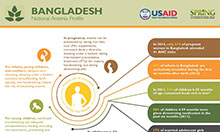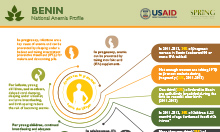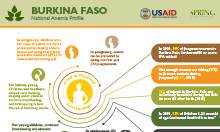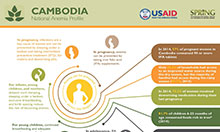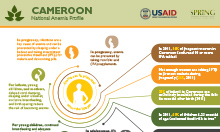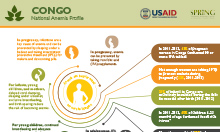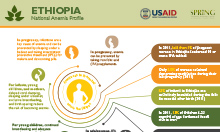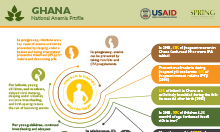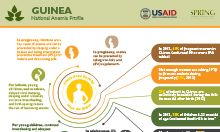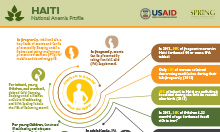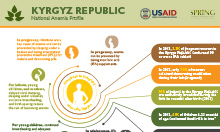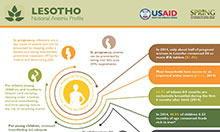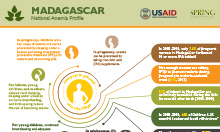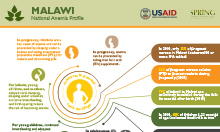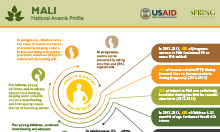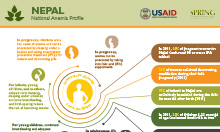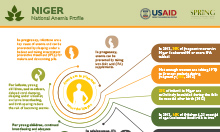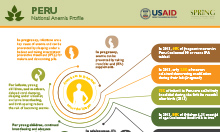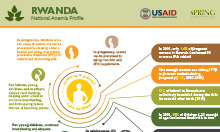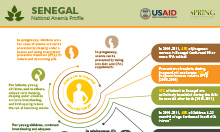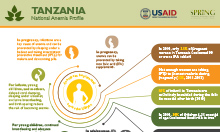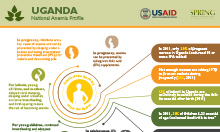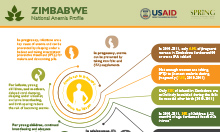SPRING has developed a series of National Anemia Profiles, which provide a snapshot of a country’s anemia situation. Information is provided on the anemia burden, the policy environment, and program coverage over time. The profiles highlight the importance of a multi-sectoral approach to prevent and control anemia to save lives and improve the well-being of mothers, infants, and children.
The profiles can be used by country leaders, stakeholders, and the broader public health community to raise the visibility of anemia and encourage coordination of anemia efforts across sectors. The profiles can also be used to monitor country progress on anemia-related targets.
Countries were included in the National Anemia Profile series if they had anemia prevalence data from the Demographic and Health Survey (DHS) at two separate time points. At the request of national governments, some National Anemia Profiles also include data from the countries’ micronutrient surveys.
Multiple Sectors Play a Role in Anemia Prevention and Treatment
Stunting and anemia share similar risk factors and are responsive to many of the same interventions
 Agriculture
Agriculture
- Increase income and reduce poverty
- Production of biofortified and iron-rich crops
- Small livestock/poultry
- Dietary diversity
 Health
Health
- Iron supplementation
- Deworming
- Breastfeeding and complimentary feeding
- Malaria prevention and treatment
- Delayed cord clamping
- Family planning
 Water and Sanitation
Water and Sanitation
- Improved latrines
- Handwashing
- Access to clean water
- Livestock management
- Infectious disease prevention
 Education
Education
- Female literacy
- Health education
- Hygiene education
- Family planning education
- Nutrition education
